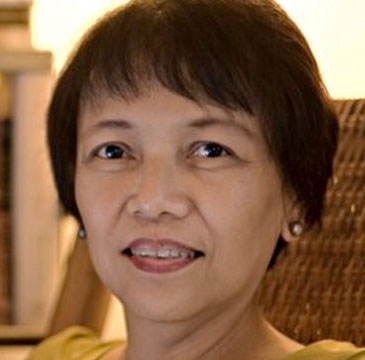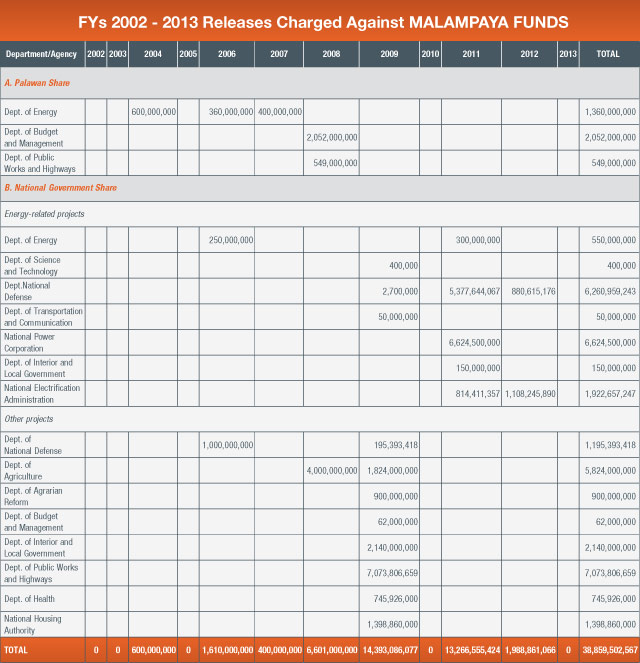SUMMARY
This is AI generated summarization, which may have errors. For context, always refer to the full article.
 When the Supreme Court temporarily stopped the spending of the Malampaya Fund for non-energy projects for the rest of the year, the amount involved was nothing middling at all. The Court was referring to P130 billion (as of August) kept in a trust fund with the national treasury which is not reflected at all in the annual national budget.
When the Supreme Court temporarily stopped the spending of the Malampaya Fund for non-energy projects for the rest of the year, the amount involved was nothing middling at all. The Court was referring to P130 billion (as of August) kept in a trust fund with the national treasury which is not reflected at all in the annual national budget.
This whopping amount is unimaginable to many government departments: 30 times more than the budget of the energy department (P4.5 billion), 8 times more than the judiciary budget (P15 billion), and 6 times more than the agrarian reform department budget (P21 billion).
Why, it’s even much larger than the total PDAF of P25 billion! Multiply the legislators’ pork barrel 5 times over and you’ve got this immense pot of gold. This comes from the royalties of the seemingly bottomless Malampaya natural gas reservoir off the shores of Palawan which provides about 50 percent of Luzon’s power needs.
Senators and congressmen casting their covetous eyes on this jackpot are in for a rude awakening. This is for the exclusive use of the president of the Philippines. Only he/she can decide where the money goes.
Ironically, a martial law decree crafted in 1976, when Ferdinand Marcos was also the legislature, still guides the use of this Fund. The decree says that collections should be used for energy-related purposes. But the strongman added an open-ended clause that allowed the money to be spent for projects beyond the realm of energy.
This presidential decree (PD 910) is now the subject of a petition in the Supreme Court questioning its constitutionality. Oral arguments will be held on October 8, including on the petitions asking that the PDAF be declared unconstitutional.
How GMA used the Fund
President Gloria Arroyo was lucky. The project began in 2001 but it was during her watch that the fortunes from Malampaya started to flow into the government coffers. She spent a total of P23.6 billion, almost all of which went to non-energy projects.

Arroyo authorized the release of P19.3 billion, mostly in 2009, apparently for the rehabilitation of areas damaged by 2 typhoons. This coincided with a pre-election year.
The agriculture department (Secretary Arthur Yap) got a lot of the bounty: P4 billion in 2008 “to augment the Agricultural Guarantee Fund Pool and the rice self-sufficiency programs and other commodity programs” and P1.8 billion in 2009 to help farmers and fishermen devastated by the typhoons.
The interior department (Secretary Ronnie Puno) received P2.1 billion in 2009 for its calamity rescue operations; the National Housing Authority (Vice President Noli de Castro, chairman, and Federico Laxa, general manager) P1.4 billion for relocation efforts; the defense department (Secretary Norberto Gonzales), P1.2 billion for the “structural maintenance project and recovery of C-130.”
It was the public works department (Acting Secretary Victor Domingo who replaced Secretary Hermogenes Ebdane) that received the heftiest share, P7 billion. This was distributed to the office of the secretary and various regional offices to “implement priority infrastructure projects.”
In October, the Commission on Audit may be able provide answers on how all of these billions of pesos were really spent when it releases its report.
Palawan’s share
Only P303 million went to supposedly fund the energy projects of the science and technology department, transport and communications department, defense department, and the energy department.
Arroyo released almost P4 billion to Palawan as assistance from the national government. But the sharing scheme between Manila and Palawan is contentious and is the subject of another case pending in the Supreme Court. Palawan demands 40% from the earnings, claiming that the Malampaya area falls under its jurisdiction since, among others, pipelines pass through parts of the province to Batangas. But the Arroyo government took the position that Malampaya is way beyond Palawan’s area.
Reading the transcript of the oral arguments in 2009, one is reminded of siblings bitterly quarrelling over inherited wealth.
Aquino’s term
For his part, President Aquino put in all of his Malampaya Fund expenses to energy-related projects, about P15 billion from 2011-2012. The biggest chunk went to the National Power Corp (P6 billion), followed by the DND (P5.6 billion) “to upgrade its capability” to secure the natural-gas-to-power project.
The rest went to the National Electrification Administration (P1.9 billion), energy department (P300 million), and interior department (P150 million for the “Pantawid Pasada”).
However, giving the president such awesome power — cloaked by a decree from our authoritarian past — takes out the checks and balances. This was partly discussed during the 2009 oral arguments:
Justice Antonio Carpio: Now, does the President have a legislative power?
Atty Ponce de Leon (counsel for Palawan): Not anymore, your honor.
Carpio: It’s only Congress that can appropriate. So, can that provision be valid now?
De Leon: I don’t think it will be valid now but it is how they are using it.
Carpio: So, they are illegally using that provision, it’s no longer valid.
De Leon: Yes, your honor.
* * *
Carpio: Don’t you think that it should be Congress that should be deciding how this $24 billion [royalties from Malampaya] national wealth should be spent?
De Leon: I agree with that, your honor.
Carpio: You agree with me that this PD 910 is functus officio [no force or authority].
De Leon: Yes.
Carpio: No more, it’s gone forever.
Will the Supreme Court take away presidential power over the Malampaya billions? This is one case worth watching. – Rappler.com
Add a comment
How does this make you feel?
There are no comments yet. Add your comment to start the conversation.